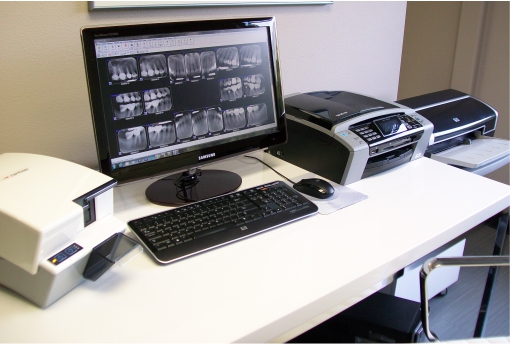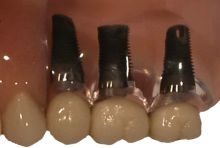Digital X-Rays Reduce Radiation by 60-80%

Digital x-ray systems use sensors to produce better images than film while reducing radiation 60-80%.
The Interactive Diagnostic Suite (formerly called the exam room) at Collins Family and Implant Dentistry features a Soredex Optime digital x-ray system. Using sensors that are the same size as adult and child dental x-rays, images are captured to our computer system and displayed on computer monitors. The images fill the monitor screen, so patient and doctor can view them together. (See our related article about Interactive Diagnosis.) Dedicated software then allows adjustment of brightness, contrast, and the number of gray scales to show each feature of the image in an optimum way. Unlike traditional film, under or over-exposure is easily corrected with the software.
We have a room dedicated to digital imaging that we refer to as an Imaging Center. We use this to work up digital x-rays, digital pictures, and digital transfers of images between dental specialists and dental laboratories.
Our digital x-ray system requires special x-ray tubes that allow reduction of radiation by 60-80% to accommodate the sensors that are used instead of film. Although dental x-rays are known to represent very little risk, many health-conscious people pursue every opportunity to reduce any risks. Consider this – a full series of x-rays (18 films taken every 5 years for most patients) uses radiation comparable to two hours of exposure to the sun. Elimination of silver-based film and film-processing chemicals is good for the environment.
Collins Family and Implant Dentistry is proud to have worked as an early adopter of wireless digital x-ray systems. Dr. Collins worked with Soredex-Finndent to create software enhancements for their Digora system and as a beta tester of new network versions of the software. The chief software engineer for the system visited us from Finland to deliver an early release of their hardware and software. Dr. Collins conducted early demonstrations of teledentistry using digital x-ray systems with Intel computer-based conferencing systems at the national convention of the American Dental Association in 1995, and at several universities and scientific meetings in the US and Mexico.






